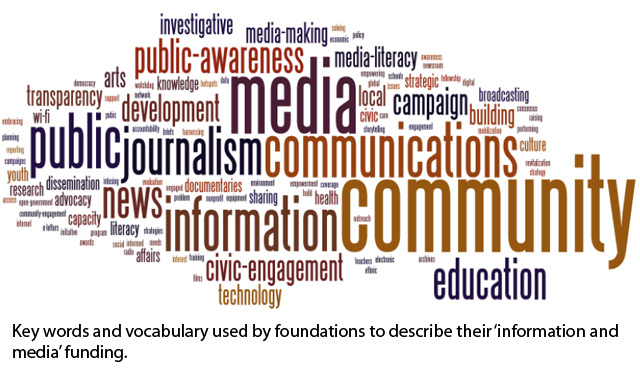
Related
“How and why community and place-based foundations are becoming players in the news and information field” by Mayur Patel on Knight Blog
The opportunity for community and place-based foundations to play a role in addressing their community information needs has attracted increased interest from the field. This report highlights findings from the State of Information and Media Funding Survey. The purpose of the survey is to understand how and to what extent community and place-based foundations are engaged in addressing their community information needs; the findings in this report focus on three primary issues related to foundation engagement:
-
How foundations describe and define information and media grantmaking
-
How foundations are engaged in addressing their community information needs
-
What motivates and supports foundations’ involvement in addressing community information needs
This year, 162 community and place-based foundations responded to the field survey, representing 16% of the foundations contacted by email to participate. Half of this year’s respondents are community foundations (n=81) and half are place-based foundations (n=81).
‘Information and Media’ includes many types of activities and categories
Many community and place-based foundations have seen a decline in locally relevant news and information in their communities. A substantial percentage of survey respondents (26%) reported that the availability of local news and information vital to civic life has declined over the past three years.2 While some foundations are working to fill the information gaps in their community, there is no widely held, consistent definition of “community information” or “information and media-related” grantmaking. Knight Foundation has used the following definition of information and media-related funding when asking community and place-based foundations how much they contribute to these efforts:
-
Creating information and media content (e.g., creating online news content, documentary films)
-
Developing greater information and media infrastructure (e.g., supporting new media outlets, increasing regional broadband access)
-
Influencing information and media policy (e.g., promoting government transparency, building coalitions to promote local information and media policy)
-
Increasing digital media literacy among residents or specific populations (e.g., training for youth or senior citizens)
-
Otherwise using information and media to address other community issues, such as health or education (e.g., publishing community indicators, engaging in an awareness campaign about education reform)
